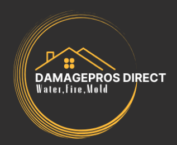Flood waters can wreak havoc on your home, but being proactive can save you time and money. This guide will highlight five early warning signs of potential flood damage specific to Charlotte homes, empowering you to act quickly to protect your property. By recognizing these indicators and knowing how to respond effectively, you can mitigate damage and ensure your home remains a safe haven. Let’s look into the signs you should be on the lookout for and the steps you can take to safeguard your living space.
Understanding Flood Risks in Charlotte
To effectively protect your home, it’s vital to understand the flood risks specific to the Charlotte area. With its climate and geography, Charlotte faces unique challenges that can lead to unexpected flooding events. Knowing these risks helps you take preventive measures and be prepared in case of a flood. Staying informed will empower you to protect your investment and your family’s safety during adverse weather conditions.
Common Causes of Residential Flooding
Flood damage in residential areas often stems from heavy rainfall, storms, or poor drainage systems. Localized flooding can occur due to natural factors like rivers overflowing or manmade issues such as blocked storm drains. Understanding these causes equips you to identify potential hazards around your home and take action to mitigate risks.
High-Risk Areas in Charlotte
Some neighborhoods in Charlotte experience higher flood risks due to their proximity to rivers or lower elevations. Areas such as the Catawba River basin and certain regions near the little sugar creek are particularly vulnerable. Being aware of these risky zones ensures you can stay alert and take necessary precautions to safeguard your property.
Flooding can lead to devastating effects for homes located in these high-risk areas. Prolonged exposure to water can cause structural damage, mold growth, and significant repair costs. If you live in a flood-prone zone, consider obtaining flood insurance and implementing flood defenses, such as sandbags or outdoor drainage systems, to protect your property from potential water intrusion.
Early Warning Signs of Flood Damage
Clearly, recognizing the early warning signs of flood damage is crucial to protecting your home in Charlotte. Being vigilant about subtle indicators can save you from extensive repairs and costly restorations. From visual cues to sensory experiences, knowing what to look for and how to respond can make a significant difference in the health and safety of your living environment.
Water Stains and Discoloration
One of the most noticeable signs of potential flood damage is the appearance of water stains or discoloration on walls, ceilings, or floors. These marks often indicate that moisture has infiltrated the materials, possibly due to leaks or previous flooding. If you spot any unusual stains, it’s crucial to investigate their source promptly to prevent further damage.
Musty Odors and Increased Humidity
Discoloration of walls or other surfaces is often accompanied by musty odors or a noticeable increase in humidity in your home. Such scents can indicate that mold or mildew is present due to excessive moisture, which can lead to serious health risks if left untreated. Taking immediate action can help mitigate these problems.
For instance, consider using a dehumidifier to control moisture levels in areas that feel damp or musty. You should also check for any leaks or plumbing issues that could be contributing to the humidity. Addressing these factors early can help you avoid more significant mold infestations later on.
Warping of Wood and Laminate Surfaces
Any warping of wood, laminate surfaces, or flooring can be a sign of excess moisture or flooding in your home. These changes often indicate that water has penetrated beneath the surface, leading to swelling, buckling, or even detachment. If you notice warped surfaces, it’s crucial to examine the underlying cause immediately.
Signs of warping might include visible curves, gaps between boards, or loose floor tiles. You should take proactive steps to identify the source of the moisture and repair it, as prolonged exposure can result in more extensive damage and may require replacing the affected materials entirely.
Foundation Cracks and Structural Shifts
You should always be on the lookout for cracks in your foundation or noticeable shifts in the structure of your home. These signs can indicate that floodwaters have compromised the stability of your house. Over time, even small cracks can enlarge and create serious structural issues if not addressed quickly.
Water intrusion can weaken the foundation, leading to more significant structural problems. It’s crucial to monitor foundation cracks closely and consult with a professional if you notice any changes or are concerned about the integrity of your home. Timely repairs can prevent further complications and preserve your property’s value.
Mold and Mildew Growth
Early signs of mold and mildew growth can be an alarming indicator of potential flood damage. If you notice patches of mold on walls, ceilings, or other surfaces, it’s crucial to address the issue immediately to prevent health hazards and property damage.
Laminate and wood surfaces are particularly susceptible to mold growth when exposed to moisture. If moisture is persistent, you may also find mold hidden behind walls or in attics and basements. Taking swift action to investigate the cause, clean the affected areas, and reduce humidity can protect your home and your health.
How to Respond to Early Flood Damage
Many homeowners may feel overwhelmed when they discover early signs of flood damage. However, acting promptly and systematically can significantly mitigate the impact. It’s important to prioritize safety, address the water intrusion, and begin the restoration process, which can include contacting professionals who specialize in flood damage repair. Your swift actions play a vital role in preserving your home and belongings.
Immediate Steps to Take
Immediate action is key when you notice signs of flood damage. First, ensure your safety by turning off electricity and gas lines if necessary. Next, attempt to stop the water source if it is safe to do so. Remove any valuable possessions from the affected areas to reduce further damage. Lastly, document the situation and assess the extent of the damage before contacting a professional for assistance.
Documentation for Insurance Claims
Take detailed notes and photographs of the flood damage as soon as possible. This documentation will be vital when filing an insurance claim. Be sure to capture images of any damaged property, water levels, and any measures you’ve taken to address the situation.
Understanding the claims process and providing comprehensive documentation can significantly influence the outcome of your insurance claim. Include dates, descriptions of the damage, and any relevant invoices or receipts for repairs. The more thorough the information you provide, the better your chances of receiving proper compensation for the damages incurred. Proper documentation not only strengthens your claim but also helps expedite the processing time, allowing you to focus on restoring your home faster.
Prevention Tips for Charlotte Homeowners
Not all flood damage can be predicted, but you can take steps to minimize your risk. Implement these prevention tips:
- Inspect and clean gutters regularly.
- Install sump pumps in basements.
- Seal windows and doors to prevent leaks.
- Check and maintain drainage systems.
- Consider flood insurance for added security.
Perceiving these warning signs early can save you from extensive damage and costly repairs.
Landscaping Strategies for Water Management
If you want to manage water effectively around your home, consider implementing landscaping techniques such as grading your yard to slope away from your foundation, incorporating rain gardens, and planting native vegetation that can absorb excess moisture. These strategies not only enhance your landscape but also reduce water accumulation near your home.
Home Maintenance to Prevent Water Intrusion
Even minor maintenance oversights can lead to significant water intrusion. Regularly inspect areas around your home for potential leaks and damages, including roofs, windows, and doors.
To further protect your home, create a detailed maintenance schedule that addresses roof inspections at least twice a year, clearing debris from gutters, and checking caulking around windows and doors. Additionally, consider using water-resistant materials in vulnerable areas such as basements and crawl spaces. By keeping your home in optimal condition, you can significantly reduce the risk of water intrusion and its associated damages.
Professional Assessment and Remediation
Your next step after identifying potential flood damage should be a professional assessment. Engaging with a certified water damage restoration specialist ensures a thorough inspection of your home for hidden issues like mold or structural integrity concerns. Experts use specialized equipment to detect moisture levels and provide a detailed plan for remediation, helping you minimize long-term damage and health risks.
When to Call Flood Damage Experts
An immediate response is imperative if you notice any severe signs of flooding, such as standing water, musky odors, or visible mold growth. Delaying a call to flood damage professionals can lead to exacerbated issues, making it vital to act quickly. Your health and safety, as well as the condition of your home, depend on timely intervention.
Choosing the Right Restoration Service
Call a restoration service that is licensed, insured, and has a solid reputation in your community. Look for companies that offer 24/7 emergency support and possess certifications from well-known organizations, ensuring they meet industry standards and best practices. Customer reviews and testimonials will further guide your decision by providing insight into their previous work and customer service.
The right restoration service will not only address the immediate flood damage but also guide you through the insurance process and help you implement preventive measures for the future. A reputable company will offer transparent pricing and a comprehensive treatment plan, making sure you understand each step of the process. Choosing well can save you time, stress, and further complications down the road.
Factors Affecting Flood Damage Restoration
All homeowners in Charlotte should understand that several factors impact the effectiveness of flood damage restoration. These factors include:
- The extent and duration of flooding
- Type of materials involved
- Type and location of the damage
- Speed of response and restoration efforts
After understanding these factors, you can better prepare for and manage the restoration process effectively.
Timeline Considerations
Now, it’s important to recognize that timing plays a significant role in flood damage restoration. The sooner you begin the restoration process, the better your chances of minimizing long-term damage. Quick responses can limit mold growth and structural weakening, ensuring your home is safe and sound.
Cost Factors and Insurance Coverage
Even if you have insurance, various cost factors can affect your flood damage restoration process, including:
- The severity of damage
- Extent of repairs needed
- Type of materials required
- Your insurance policy limits
Perceiving these factors will help you navigate your coverage effectively.
Restoration costs can vary widely based on the situation. The type of flood event, associated damages, and urgency all add to the expenses incurred. Your insurance policy’s specifics play a vital role in determining what is covered and what is not. Being proactive about discussing your coverage will serve you well in times of need.
- Keep an updated inventory of your belongings
- Review your policy annually
- Communicate with your insurance agent
- Document damage for claims
Perceiving these aspects will ensure you are prepared for any restoration efforts you might face in the event of a flood.
Conclusion
So, by being aware of the five early warning signs of flood damage in your Charlotte home, you can take proactive steps to protect your property. Monitor for any unusual water stains, musty odors, or peeling paint, and respond promptly to any signs of moisture intrusion. Ensure that your gutters and drainage systems are functioning efficiently, and assess the elevation of your home in relation to flood zones. Taking these measures can help you mitigate damage and safeguard your home against future flooding risks.
Need Professional Water Damage Restoration?
Act fast to minimize damage and reduce repair costs. Contact our expert team today for thorough water damage restoration services. Get in Touch Now and let us help you restore your home!

